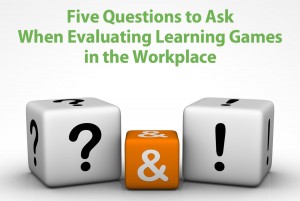
Game On! Learning’s white paper is written for companies looking into gamification, but has tips for developers of traditional learning games.
A new white paper on how to find and utilize effective learning games for businesses highlights some of the key problems that beset many developers designing new games for the classroom or the boardroom.
The report, available for free from Game On! Learning, finds there are five design flaws that many developers struggle to address.
First, many games and simulations only address the basic function of a task, failing to give the game the level of complexity a person must deal with when trying to achieve a specific goal. If the game does not force a player to address the multitude of issues he or she would face in the real world, it is only offering a shallow version of the experience, or as the authors put it, the game suffers from “low cognitive fidelity.”
Other games lack the real-world physical or social cues that are important when training someone for a workplace task. Games that are too detached from the real world the person is being trained to operate within may lose their effectiveness.
The authors also warn that game design cannot or should not trump the actual skill training that is the aim of the serious game.
When you’re up to your eyeballs shooting space aliens, it’s hard to remember that the objective was to plan an effective marketing strategy! This common design error in serious games creates an entertaining game play experience that distracts the player from devoting time and attention to mastering the real-world skill.
Author Rob Foshay
The authors encourage those choosing games to be conscious of the amount of feedback the employee is receiving from the game to ensure that it is adequate to help the player understand where they need to focus to improve and when they have mastered the required skill.
“Regardless of how feedback is delivered, the critical issues are what information the feedback provides to the player, and when the information is provided,” they write.
Finally, the authors highlight that games in the corporate environment must be aware of balancing between being too hard and too easy to ensure employees stay engaged and don’t become frustrated.
Game On! Learning’s white paper has many more recommendations for those considering purchasing or developing learning games to assist with training. You can download the full paper for free with a quick registration.
